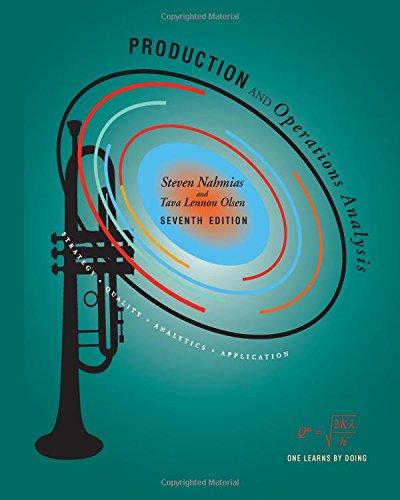A teller works at a rural bank. Customers arrive to complete their banking transactions on average one
Question:
A teller works at a rural bank. Customers arrive to complete their banking transactions on average one every 10 minutes; their arrivals follow a Poisson arrival process. Because of the range of possible transactions, the time taken to serve each customer may be assumed to follow an exponential distribution with a mean time of 7 minutes. Customers wait in a single queue to get their banking done and no customer leaves without service.
a. Calculate the average utilization of the teller.
b. Calculate how long customers spend on average to complete their transactions at the bank (time in queue plus service time). What percentage of that time is spent queueing?
c. How many customers are in the bank on average?
d. Calculate the probability a customer will spend less than 30 minutes at the bank (time in queue plus service time).
e. Calculate the probability that there are more than two customers in the bank.
f. What do a–e imply about customer service at the bank?
Step by Step Answer:

Production And Operations Analysis
ISBN: 9781478623069
7th Edition
Authors: Steven Nahmias, Tava Lennon Olsen






